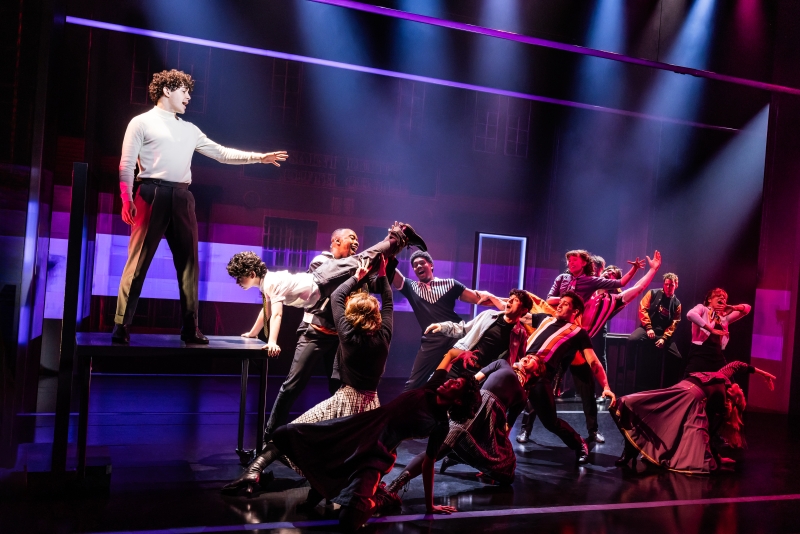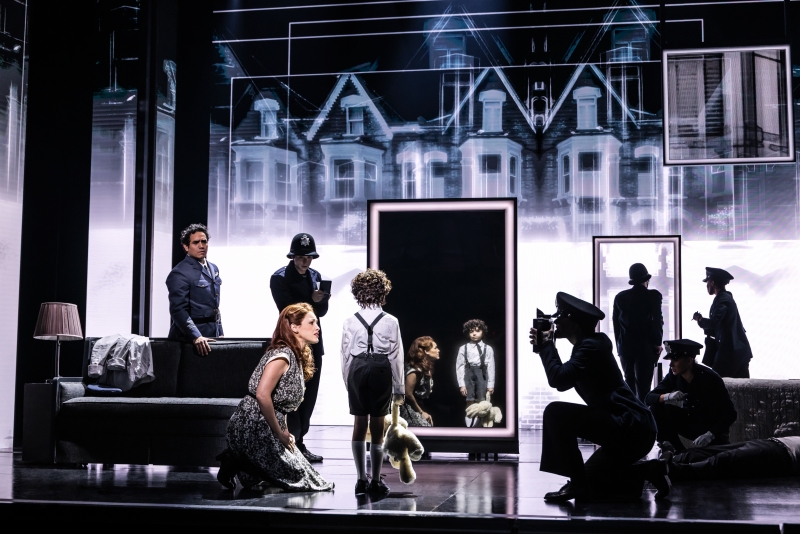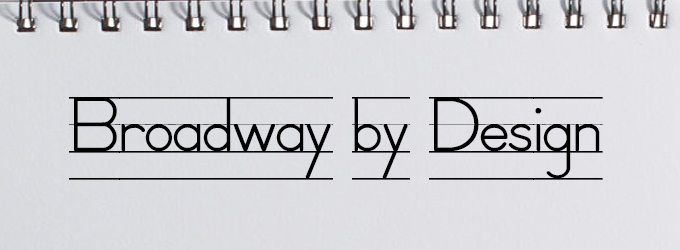Broadway By Design: THE WHO'S TOMMY
The Who's Tommy is running on Broadway at the Nederlander Theatre.

|
|
In Broadway by Design, BroadwayWorld is shining a spotlight on the stellar designs of this Broadway season, show by show. Today, we continue with the creatives from The Who's Tommy- Scenic Designer David Korins, Lighting Designer Amanda Zieve, Projection Designer Peter Nigrini, Sound Designer Gareth Owen, and Costume Designer Sarafina Bush.
In The Who's Tommy, after witnessing his father shoot his rival, the young Tommy Walker is lost in the universe, endlessly and obsessively staring into the mirror. An innate knack for pinball catapults him from reticent adolescent to celebrity savior.
Where did the design process begin? Scenic designer David Korins found inspiration in the work of Piet Mondrian. "We wanted Tommy to live in a vocabulary of magic realism, an ever-changing environment that could go from relatively grounded, realistic locations to wildly, abstract places," he explained. "We were inspired by several visual artists, including Mondrian. He was our point of departure for some form of ever-changing magical box that would service each scenes needs while still elevating the visual vocabulary to something much more profound. Imagine a three-dimensional Mondrian painting that was ever shifting and changing the fields of color, the apertures of the physical space and was lit from within."
"Having worked with David Korins on a number of occasions, this collaboration harkens back to our first outing together, Dear Evan Hansen. In both cases, he crated a machine for the mechanics of the story that could move at the speed required of modern visual storytelling and then surrounded it with a blank canvas for me to fill," said projection designer Peter Nigrini. "Ultimately, the humility of this approach to the set, an understanding that it was ultimately not the visual center of the production, is what allowed for the overall success of the visual design.
"My mandate from the outset was to build a coherent language for that while helping the audience to make their way through its loose narrative, embraced the fundamental abstraction and wild imaginative leaps of the score.
.jpg)
.jpg)
"In so many ways I felt my responsibility was to cofound the audience’s expectations while simultaneously delivering on the promise of the score," added Nigrini. "'Pinball Wizard' is the perfect example of this problem. The music is so well known, and there is such an amazing graphical aesthetic around pinball machines that the number almost designs itself, but this is, in fact, the problem. How to make the number simultaneously satisfying and surprising. Ultimately, the design for the number doesn’t in any way reference pinball and yet the audience feels that they have seen the embodiment of the kinetic and visceral experience. It is nothing they had ever imagined and simultaneously exactly what they wanted."
Lighting designer Amanda Zieve also drew inspiration from talks with her fellow collaborators. "From the beginning for this production we wanted to highlight the trauma in Tommy’s story that transcends a time period. We wanted to associate color to Tommy’s trauma similar to threads in a tapestry," she explained. "By telling a specific color story, we felt we could kaleidoscope Tommy’s world when he found pinball and later fame. I also wanted to make sure that we moved our focus seamlessly as does David’s set and Peter’s imagery. Finding the right moments to highlight in the choreography and the rock music was sheer joy."

Costume designer Sarafina Bush looked to the music and legacy of The Who themselves. "I spent a lot of time listening to their music and researching the mod aesthetic of their fan base around the time the album was released. Knowing that the show wanted to have a slick, modern feel to it, I decided to lean into the futuristic spin on mod that fashion designers of the time were taking.

"I drew a lot of inspiration in particular from such designers as Pierre Cardin, André Courrèges, and Paco Rabanne whose approach to fashion in that moment felt parallel to The Who in their rebellion against society's conservatism and the previous generation," Bush explained.
For the show's sound, Gareth Owen drew from his past. "I grew up mixing some of the biggest rock and roll bands on the planet, touring stadiums all over the world with the likes of Bon Jovi, Aerosmith and the Rolling Stones," he explained. "My parents were massive Who fans and I clearly remember hearing Tommy on vinyl from my dads ancient Akai Hifi system before I was double-digits old - usually at volumes loud enough to annoy the neighbours. On this basis, being asked to design Tommy on Broadway was never a show I was going to shy away from. So for inspiration? Yeah, that comes from a lifetime of Who appreciation combined with a near constant immersion in rock and roll!"
Where did the designers hit their biggest hurdles?
"No doubt about it, the biggest challenge for the sound team on Tommy was the volume level," added Owen. "The show presents an interesting issue in that, unlike even the loudest Broadway shows, there is virtually no respite. There are eight words of dialogue and almost every song is written to be loud - there aren’t many ballads and very few opportunities to ease back and give the audience a break - even the overture is written to be loud! This, combined with the large number of Who fans who expect a full blown rock concert meant that delivering an exciting show without offending more traditional Broadway audiences was a concern that literally kept my associate Matt Peploe and I awake at night. Luckily the critical and audience response has been an almost universal agreement that we got the balance right - an achievement that raised more than a few glasses at opening night for sure."
![]()
Bush struggled with more logistical challenges. "The ensemble of this show is so phenomenal and are tasked with rapid switches from one character to another. In the prologue alone, ensemble members need to go from being a paratrooper, to a swing dancer at a Captain's Hall, to a nurse, a German soldier, an Allied soldier, a prisoner of war, and several more. Des McAnuff and I discussed early on that this needed to be as seamless as possible, so as not to impede the pace of storytelling happening onstage, so we decided to give the ensemble a base look on which to build characters"
"One of the greatest challenges for the entire production, design included, was to find an emotional core to the work that leaves audiences invested Tommy and his family," said Nigrini. "Unique to this production was a particular attention to the trauma experienced by Tommy, and by extension the society around him. The projection design’s part in this is a critical inflection point when Tommy looses the ability to see, hear and speak. Before this moment the projection design is in the vein of cinematic realism, setting the location for events and presenting historical information, but after this moment the style changes abruptly, to a much more abstract and visually aggressive style that attempts to capture the world as Tommy might see it; to take us, as Tommy puts it, on an Amazing Journey."

Korins and Zieve both admitted that living up to the show's legacy was one of the most daunting aspects of the process.
"The original Broadway production of Tommy is generally revered as one of the most game changing visual designs theater history," said Korins. "We needed to come up with a totally original visual presentation that could serve the story just as well but could stand on the shoulders of a giant."
"[We knew] how fondly many people remember the original Broadway production. I had a real sense from beginning this project that we needed to make something visually stunning that could compete with the technical boundaries the original pushed," added Zieve. "I think the combination of all our design elements and the staging has achieved this. Audiences are really experiencing a cohesive production that takes them to Tommy’s world. I think the audience has a hard time pinpointing the individual elements and they get swept up in the music and the story. Which feels like we succeeded."
The Who's Tommy is running on Broadway at the Nederlander Theatre.
.png)
|
.png)
|
Videos


